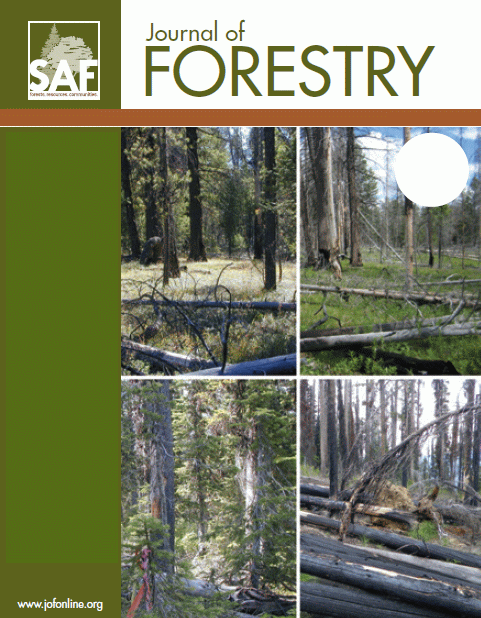-
PDF
- Split View
-
Views
-
Cite
Cite
Ben Filewod, Why REDD will Fail, Journal of Forestry, Volume 115, Issue 4, July 2017, Page 323, https://doi.org/10.5849/jof.2016-079
Close - Share Icon Share
WHY REDD WILL FAIL
The Reducing Emissions from Deforestation and forest Degradation program (REDD, now REDD+) has drawn its fair share of criticism since it was launched at COP 13 in 2007, along with 5.4 billion $USD in funding.1 Critics of the program focus on the failure of what is, at core, an international payment-for-ecosystem-services scheme to protect the rights of local communities, as well as the debatable morality of paying some of the world's poorer countries to absorb pollution from the world's richest. There is also the more existential question of whether REDD is nearly as good at keeping carbon dioxide out of the atmosphere as proponents claim.
The idea that reducing deforestation might slow the pace of anthropogenic global warming has a long history, but coordinated international efforts began with the signing of the Kyoto protocol in 1997. Reducing emissions from deforestation in (specifically) developing countries was first tabled in 2005 as RED, and by 2008 not only forest degradation but also conservation, sustainable management, and enhancement of existing forest carbon stocks had been added as equally important mitigation options. This history of this development, full of the realpolitik of international climate negotiations, is fertile ground for scholars of international institutions, but the authors of the provocatively titled Why REDD Will Fail have little time for theorizing. In a concise 116 pages they marshal, review, and approve the current arguments of the social sciences against REDD. The focus here is much more on rights and justice than on the ecology or economics of maintaining healthy forest cover.
This approach produces some surprising lacunae in a volume that aims to explain not only why REDD is “destined to fail” (p. 2) but also how it will “benefit only some corporations and government and leave the planet's balance of carbon unchanged while disrupting the livelihoods of millions of people” (p. 32). Consider the treatment of leakage, along with permanence and additionally one of the three bête noir of forest carbon managers. Leakage refers to the tendency of efforts to reduce emissions in one place to result in a commensurate increase in emissions in another place (or time). The problem, as far as REDD is concerned, is essentially one of demand elasticity. When demand for wood or nontimber forest products is relatively inelastic, as is often the case for what are, after all, staple goods in relatively poor (and growing) countries, the quantity demanded does not change much with respect to changes in price. A REDD project that puts a given forest out of bounds simply leads loggers and hunters to go next door, or to the next country. In the Noel Kempff Mercado project in Bolivia, generally agreed to be the first REDD-type project, leakage estimates ranged as high as 60%. In globalized markets leakage estimates range from negligible to over 100% of “avoided” emissions, and adequate safeguards are generally lacking from REDD proposals.2 The authors' treatment of this critical subject is limited to a brief description of the phenomenon in a regrettable chapter focused on the definition of a forest, and arrives at the surprising (and false) conclusion that “avoided deforestation … makes a forest more likely to collapse at a much faster rate. This inevitably causes more carbon to be released” (p. 41). The importance of a sustainable wood supply in developing nations deserves far more attention.
Some contradictions and omissions are, of course, unavoidable given the breadth of topics covered by modern-day scholarship on REDD and, in particular, the tension between its dual identities as “payment for mitigation” and “conservation as development.” REDD is simultaneously a powerful tool for mitigating climate change and one that helps the enormous emissions of industrialized donor countries to continue unabated. The international cash transfers on which it depends have the potential to spur sustainable development in recipient countries, while also offshoring and privatizing forest governance (the assertion that these processes in fact constitute a new form of colonialism and “another way to keep countries dependent and reliant on more powerful countries” [p. 80] is perhaps a point too far). Efforts to reconcile these dual identities remain outstanding, but the authors deserve credit for their efforts to assess how the daily lives of people who actually live in REDD landscapes are affected.
The book is strongest in its ability to provide a survey-style introduction to the landscape and some of the challenges of REDD+, and there are some sections that shine. The brief sketch of REDD's evolution (Chapter 2) provides a valuable introduction, and the global review of conditions in REDD partner countries (Chapter 4) is an excellent summary of the vast literature on Drivers of Deforestation (DoD). Students of international relations who are new to REDD will find interesting examples of dependency theory and antiglobalization critiques throughout. In providing an introduction to the challenges, the authors have on the whole succeeded, but the search for solutions is unlikely to be much advanced by their conclusions that “any program like REDD will ultimately fail without fundamental changes in our market economy and dependence on fossil fuels” and “the economic incentives to participate in REDD need to be greatly increased” (p. 115). Success and failure are difficult to determine in a multiobjective process as vast and as heterogeneous as REDD+, but if the scheme does fail in some or all of its objectives students of its demise are unlikely to find a wholly satisfactory explanation here.
Data from Climate Funds Update. Current as of May 2016. Available online at www.climatefundsupdate.org/data.
Atmadja, S., and L. Verchot. 2011. A review of the state of research, policies and strategies in addressing leakage from reducing emissions from deforestation and forest degradation (REDD+). Mitig. Adapt. Strat. Global Change 17(3):311–336.





Comments